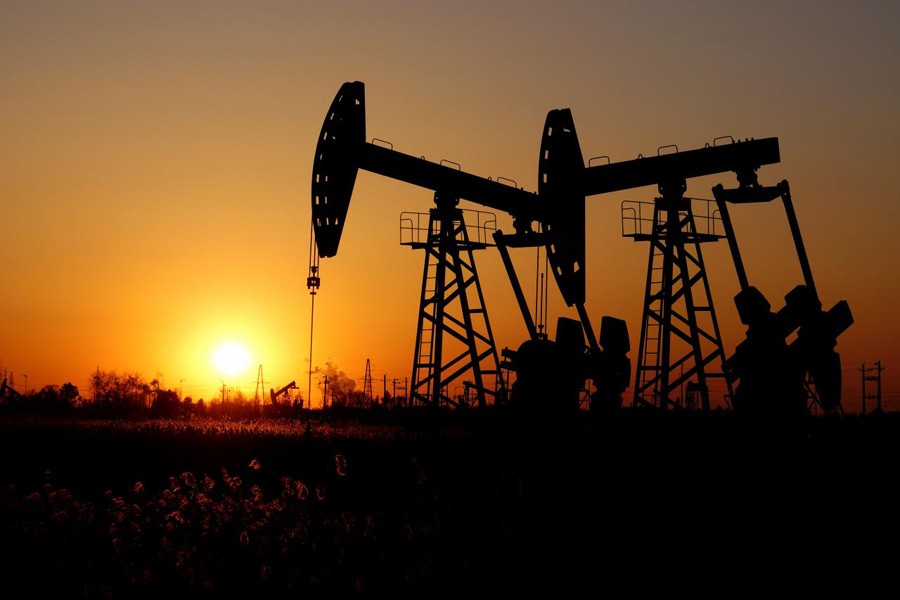Oil prices climbed on the final trading day of the year on Monday, mirroring gains in stock markets, but were on track for the first yearly decline in three years amid lingering concerns of a persistent supply glut.
Brent crude futures LCOc1 rose 74 cents, or 1.4 per cent, to $53.95 a barrel by 0645 GMT. Brent declined nearly 20 per cent in 2018 following two years of growth.
US West Texas Intermediate (WTI) crude futures CLc1 were at $45.84 a barrel, up 51 cents, or 1.1 per cent, from their last close. WTI is down about 24 per cent this year.
For most of 2018, oil prices were on the rise, driven up by healthy demand and also supply concerns, especially around the impact of renewed US sanctions against major producer Iran, which were introduced in early November.
Brent crude futures LCOc1, seen as a global benchmark for oil prices, rose by almost a third between January and October, to a high of $86.74 per barrel.
That was the highest level since late 2014, the start of a deep market slump amid bulging global oversupply, and many leading analysts and traders at the time said they expected crude to hit $100 per barrel again by the end of 2018.
Instead, Brent prices have wiped out all of 2018’s gains, plunging by almost 40 per cent from the year’s high to around $53.25 a barrel, in what has been one of the steepest oil market selloffs of the past decades.
The slump came after Washington gave unexpectedly generous sanction waivers to Iran’s biggest oil buyers and as concerns over a global economic slowdown amid Sino-American trade disputes dented the outlook for oil demand.
“It was the bailout of Iran that really pricked the bubble that was the crude oil market,” said Sukrit Vijayakar, director of energy consultancy Trifecta, according to Reuters news agency.
“For the immediate future, in the absence of anything new, the first pressure point for oil markets would come around May 2019 or a month or so earlier when the ‘extensions of (Iran)waivers’ would be discussed.”
The current downward pressure on oil prices should likely taper off from January, analysts said, as the Organization of the Petroleum Exporting Countries (OPEC) and its allies including Russia starts curbing production by 1.2 million barrels per day.
The market, however, might still remain under some pressure from swelling production in the United States, which has emerged as the world’s biggest crude producer this year, pumping 11.6 million barrels per day (bpd).
Outside the United States, production in Russia and Saudi Arabia also hit record levels this year.


